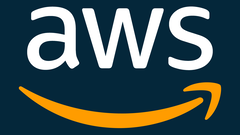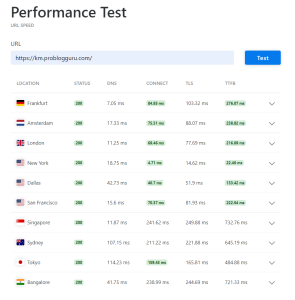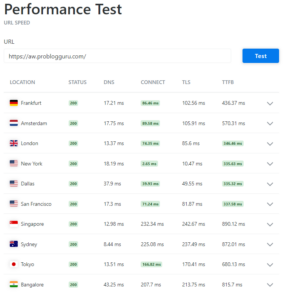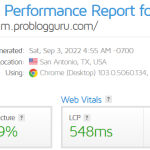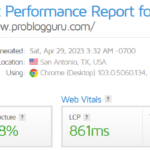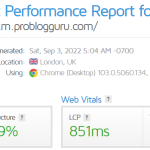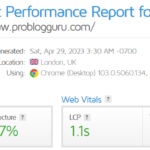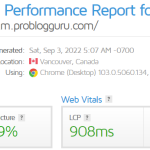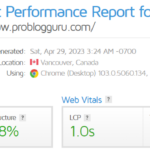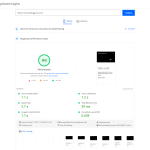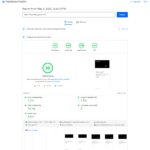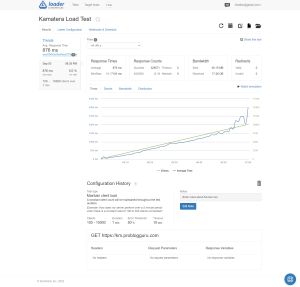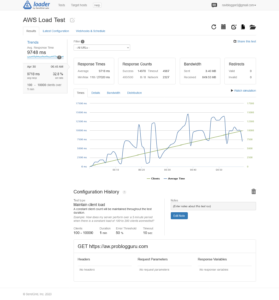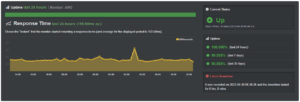Kamatera vs AWS?
In our 12-round performance test, Kamatera won 10 times, AWS won once, and there was one tie. AWS could only beat Kamatera in data center numbers, but in the remainder of the tests, Kamatera emerged as the big dog, delivering the fastest TTFB (22 ms), relentless 100% uptime, and steadfast LCP (548 ms) at the most affordable rate.
While AWS’ cluttered dashboard, expensive instances, and “paid” free apps make it a less appealing choice for a beginner.
Let’s go over the test in depth.
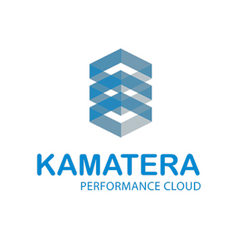
- CPU: 2.7GHz Intel Xeon
- TTFB: 22ms(NY)
- Speed: 548ms(SA)
- Uptime: 100%
- Strength: 328571(RC)
- Ease of Use: Clean Dashboard
- Hosting Resource: 1GB/20GB SSD/5TB
- Daily Backup: Yes
- Managed Service: Yes
- Security: Cloud Firewall & DDoS Protection
- Data Centers: 21
- Support: Live Chat, Phone & Email
- Pricing: From $4/m
Table of Contents
Battle 1: Which server responds faster?
When you enter your website URL into your browser to access content, the server generates a response and returns it to your browser. The time between producing a response and receiving the first byte is referred to as server response time (TTFB).
TTFB includes DNS lookup, TCP, SSL, and FB in the same order.
You can call it a bullet train’s engine. FCP and LCP will be faster if it is fast. Because it accounts for 40% of your LCP. As a result, Moz refers to it as a ranking factor.
We put up two WordPress websites, one on the New York server and the other on the Virginia server, to test the performance of both host servers (sadly, AWS does not own any New York servers).
At least 1 GB of RAM was necessary. Kamatera’s entry plan, which costs $4 per month, was enough. While AWS EC2’s entry-level plan only provides 512 MB of RAM, we chose T2.micro, which costs $8 per month.
Kamatera $4 Server Specification
Intel Xeon Platinum 2.7GHz with 49MB Cache
RAM -1 GB
SSD Disk – 20GB
Bandwidth – 5TB
CyberPanel 2.3
Ubuntu 20.04
AWS EC2 $8 Server Specification
Regular Processor- 2GHz
RAM-1 GB
SSD Disk -20GB
Bandwidth 1TB
Cyberpanel 2.3
Ubuntu 22.04
We tested both host servers and figured out how they performed on the top 10 internet hubs.
| Location | Kamatera | AWS |
|---|---|---|
| Frankfurt | 276ms | 436ms |
| Amsterdam | 238ms | 570ms |
| London | 216ms | 346ms |
| New York | 22ms | 335ms |
| Dallas | 133ms | 335ms |
| San Francisco | 222ms | 337ms |
| Singapore | 732ms | 890ms |
| Sydney | 645ms | 872ms |
| Tokyo | 484ms | 680ms |
| Bangalore | 721ms | 815ms |
Test Results
Winner – Kamatera clearly blows away AWS in the round.
Battle-2 Which one loads faster?
After core web vitals updates, page speed became a serious part of the SEO game. As the comprehensive update discloses, full page speed is not a single thing we should care about. A good FID, LCP, and CLS score is required to send a good UX single to Google.
We put down both website urls in the popular GTMetrix and Page Speed Insight tools.
| Location | Kamatera | AWS |
|---|---|---|
| Vancouver | 908ms | 1s |
| London | 851ms | 1.1s |
| San Antonio | 548ms | 861s |
Test Results
Winner – Kamatera punched AWS closely. But the millisecond difference is a huge number in the speed optimization world.
Battle 3 – Which lasts under load?
Real character only comes through a lot of burden. On spikes of traffic, a good host hits, and a poor one flops.
We flooded 10k concurrent users to both sites for a minute. Kamatera performed well, while AWS crawled poorly. Have a look at the test result.
| Parameters | Kamatera | Digital Ocean |
|---|---|---|
| Response Time | ||
| Average | 876ms | 9718ms |
| Min | 11ms | 110ms |
| Max | 7104ms | 27020ms |
| Response Counts | ||
| Success | 328571 | 14998 |
| Timeout | 0 | 4987 |
| Error Rate | 0% | 32.8% |
| Bandwidth | ||
| Sent | 36.15MB | 3.40MB |
| Received | 17.26GB | 849.53MB |
Test Result
Winner – With a stunning performance, Kamatera steals the show.
Battle 4 – Who ups constant?
Running servers 24×7 requires additional resources like cooling systems, constant energy sources, and cyber and field protection.
It also helps us determine how stable a host is and keep up our web property.
So if you find a good one, no matter where you are. Whether you sleep at the beach or spend the first night with your beloved one, your website will keep running and generate revenue for you.
For testing both hosts’ reliability, we deployed Uptimerobot and tracked their uptime throughout 30 days.
Amazingly, Kamatera scored 100% uptime. It is noted that we conducted stress tests during the uptime test.
Mammoth AWS was disappointed, as it went down for 8 minutes.
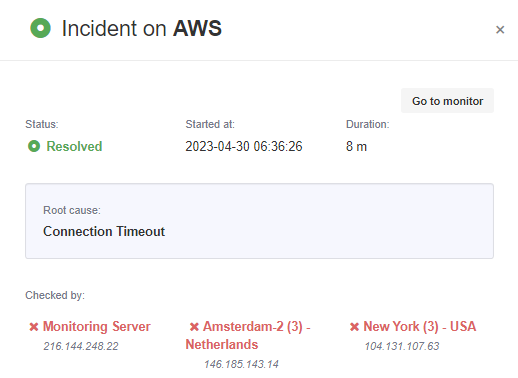 Winner – With a perfect score, Kamatera is too far ahead in the race against AWS.
Winner – With a perfect score, Kamatera is too far ahead in the race against AWS.
Battle 5: Which one is easier to use?
With loads of advanced features, AWS is not recommended for an out-and-out beginner. Literally, you will need to take a course on “how to host and manage a website on AWS.”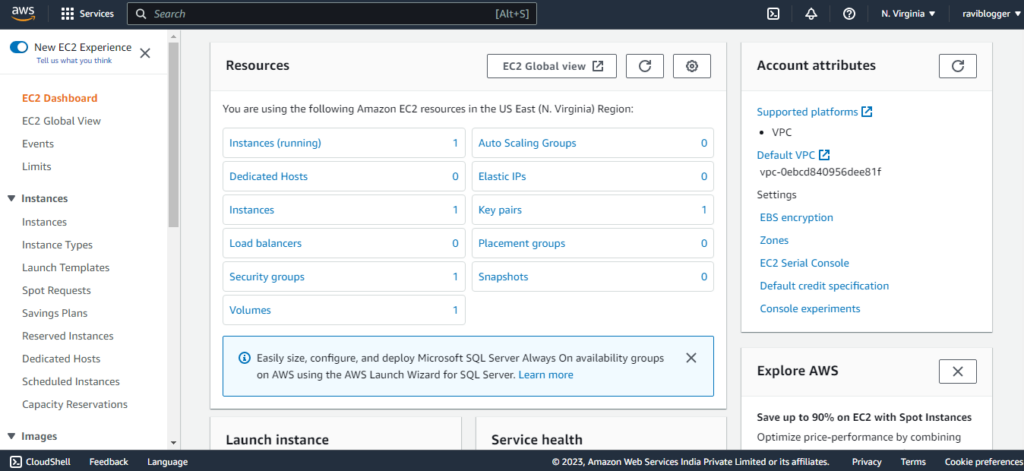
However, in their marketplace, multiple 1-click apps like WordPress, Drupal, Cyberpanel, etc. are listed.
It is strange that some apps, which are absolutely free, are available as paid ones.
Kamatera offers an easy-to-understand dashboard where you can commit backups, manage servers, upgrade, view usage of server resources, and install apps with a click.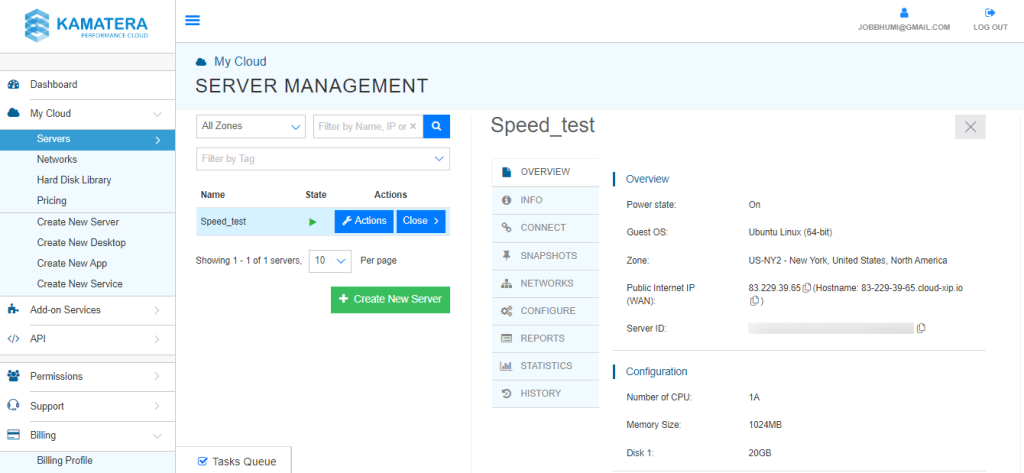
Winner: Kamatera has the upper hand in providing better UX for a newbie.
Battle 6: Which has better resources?
The AWS entry plan (T1.micro) costs $4 and consists of 512 MB of RAM only. It is insufficient for launching a simple blog. Their T2.Micro plan is recommended to run a website properly. The plan comes with 1 GB of RAM, a single-core CPU, an undisclosed 20 GB of storage, a standard processor, and 1 TB of transfer for $8 per month.
Kamatera provides a 2.7GHz+ Intel Xeon processor, 1 GB of RAM, 20 GB of SSD storage, and a huge 5000 GB of bandwidth for a mere $4 per month.
Winner – Pricing affordability favors Kamatera by a huge margin.
Battle 7: Which one takes it back better?
Kamatera daily backup is available for $3, which gradually rises according to the plan upgrade. You can take 4 snapshots per server for $0.05/GB/month and clone your whole server.
AWS offers S3 backup at $0.05/GB/month and server snapshots at the same price. But they also charge for restoring S3 backups and server snapshots. Restoring prices are $0.02,
and $0.03 per GB.
Winner – AWS could win the battle, but restoring charges drills into their ship. Kamatera gets a slight edge.
Battle 8 : Who can manage your server?
AWS has no managed service plan. Kamatera offers it for a hefty $50 per month.
However, Kamatera is an easy-peasy one for beginners in order to launch servers, install CMS like WordPress, Drupal, Laravel, etc., and manage the site. So the managed service is only recommended for web owners who want to utilize their whole energy and time on content production, SEO, and future blog plans.
Wibnner – the round is cutting cake for Kamatera.
Battle 9 : Who is more secure?
Kamatera offers a bunch of security mechanisms like a cloud firewall, disaster recovery management, enterprise-grade infrastructure, and redundant power sources.
Giant AWS provides Lightsail (cloud firewall) and WAF to filter and allow only genuine traffic.
Both hosts manage a gigantic, secure cloud network with sophisticated encryption, so intrusion into your server is near to impossible.
Winner – Both hosts prioritize data security at the next level. So both win with equal hearts.
Battle 10 : Which has a big presence?
With 21 global data centers in 18 locations across 4 continents, Kamatera covers the whole world with ultimate availability and performance.
Moreover Kamatera has a 99.95% annual uptime guarantee policy. If their server doesn’t meet the condition, they can grant a refund or service credit equal to a month’s bill or $500, whichever is lower.
With 80+ data centers in 25 locations and 225 CloudFront CDN pop-ups, AWS comfortably beats Kamatera. They also provide a 99.95% SLA with a refund policy if their servers fail to fulfill the policy.
Winner: Mammoth AWS knocks Kamatera out with a single punch.
Battle 11: Who solves queries faster?
The AWS support team is ticket system-based only. You can look for forums and online documentation to get extended help.
Kamatera has great flexibility. They provide support through multiple channels, like live chat, phone calls, and tickets. You can also seek assistance from their extensive knowledge base.
Their expert replies are concise and precise.
Winner – Usually, most IAAS providers struggle for better support. But Kamatera has done epic things.
Battle 12: Who cares about your pocket more?
We don’t find AWS pocket-friendly except for their insufficient entry-level plan, which costs $4.
Their T2.Micro plan charges $8 per month for the resource bundle of 1 GB RAM, 20 GB storage, 1 core, and 1 TB transfer, which fulfills the minimum resource consumption required to run a site properly.
Their highest plan goes for $3214 per month with 48 cores, 384 MB of memory, 10 TB of transfer, and 1 TB of storage.
Kamatera takes care of your pocket better, as their beginning plan is only $4 per month and returns 1 GB of RAM, 1 core, 20 GB of SSD, and 5 TB of transfer.
Their biggest plan is available for $1098 per month. The mighty plan consists of a 32-core CPU, 128 GB of RAM, 4 TB of SSD, and 5 TB of transfer.
Winner – Always Pocket loves cheap prices, and the round loves Kamatera.
Conclusion
Undoubtedly, Kamatera can’t compete with AWS’s gigantic cloud infrastructure, but they can outperform the mammoth in terms of performance, speed, uptime, and affordability.
Kamatera security and support are also promising and unlikely to encounter any issues.
Now it’s your turn to taste the real water of Kamatera on your own. You can initiate your testing for free.
FAQ
1. Which provider offers better performance: Kamatera or AWS?
Kamatera significantly outperforms AWS in key performance areas like TTFB (22ms vs 335ms), page load speed (548ms vs 861ms), and load handling (328,571 successful responses vs AWS’s 14,998). With 100% uptime during 30-day monitoring and lower latency across global hubs, Kamatera proves to be a faster, more reliable VPS provider, especially for websites that demand consistent high-speed delivery.
2. Is Kamatera easier for beginners to use compared to AWS?
Yes, Kamatera is much more beginner-friendly than AWS. Its clean, intuitive dashboard simplifies tasks like creating backups, scaling servers, and installing apps. In contrast, AWS’s dashboard is complex, and even basic operations often require a learning curve or dedicated courses. Kamatera also offers multi-channel support (live chat, phone, email), making it ideal for first-time VPS users.
3. Which is more cost-effective for small projects or startups?
Kamatera is more budget-friendly for small businesses and personal projects. Its entry-level plan starts at just $4/month with 1 GB RAM, 20 GB SSD, and 5 TB bandwidth. AWS’s comparable performance plan (T2.micro) costs $8/month with only 1 TB of bandwidth. Kamatera offers better resources for the price and more transparent billing, making it the clear winner in terms of value.
4. How does support differ between Kamatera and AWS?
Kamatera provides superior customer support through live chat, phone, and email, ensuring faster resolution for technical issues. Their team responds with clarity and precision. AWS, on the other hand, relies heavily on a ticket-based system and self-service documentation, which can delay assistance and frustrate users without technical expertise.
Meet Ravi Kumar, our web hosting and WordPress speed optimization guru with over 4 years of experience. He’s optimized 150+ websites, uncovering common VPS performance issues. Armed with insights, Ravi ensures smooth VPS experiences for all.
